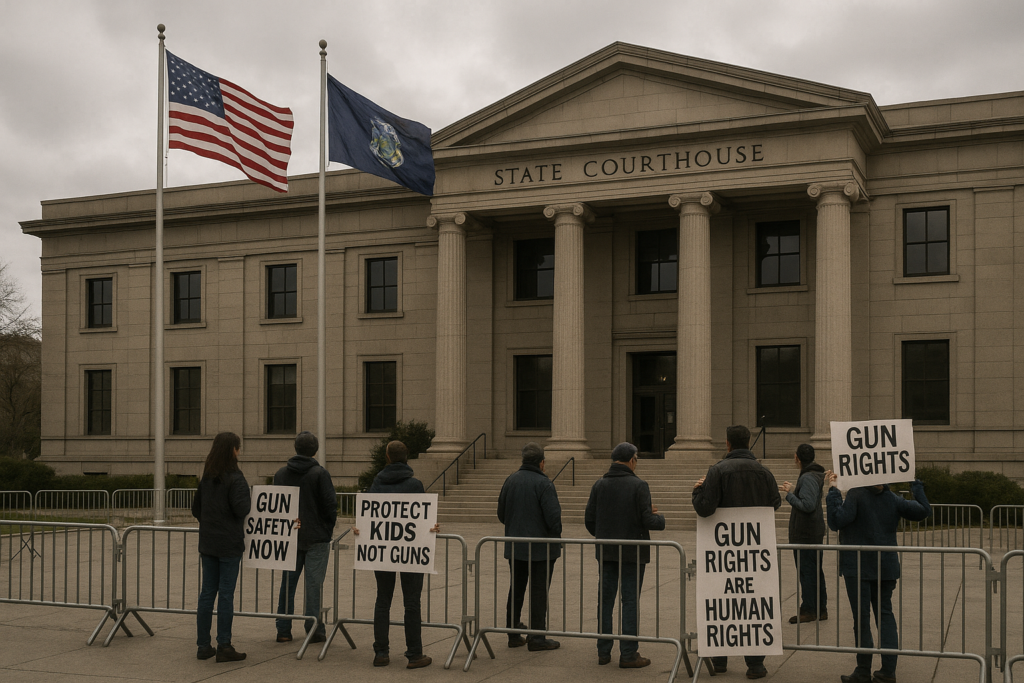Supreme Court Decision on Assault Weapons: National Ramifications for Gun Laws and Public Safety
The U.S. Supreme Court’s refusal to review state-level assault weapon bans marks a pivotal moment in the ongoing American debate over gun violence, legislative authority, and constitutional rights. On June 2, 2025, the Court announced that it would not hear challenges to Maryland’s 2013 prohibition on semiautomatic rifles like the AR-15 and Rhode Island’s 2022 law restricting magazines to ten rounds. These laws, implemented after tragic mass shootings such as the Sandy Hook Elementary School massacre, reflect efforts by states to curb gun violence through targeted regulation.
This decision leaves intact laws that have served as models for similar bans in at least ten states and the District of Columbia. It represents a significant, though temporary, affirmation of state capacity to respond to public safety crises with legislative action. The lower courts upheld these laws, stressing the unique lethality and military-style design of weapons at issue and their repeated use in high-profile mass shootings. According to recent coverage, both the 4th and 1st Circuit Courts cited the public safety risks posed by such firearms in their rulings.
The Supreme Court’s decision not to hear the cases leaves in place lower court rulings that upheld the measures, with the 4th and 1st Circuit Courts citing the weapons’ military design and role in mass killings.
The ruling does not resolve the underlying constitutional questions. Instead, it maintains protections for communities grappling with the threat of mass shootings, acknowledging the wide support for such policy among gun control advocates and a broad section of the public. The Supreme Court’s 2022 Bruen decision, which expanded gun rights by requiring new firearms laws to align with historical precedents, has complicated how lower courts approach gun legislation, but has not yet definitively addressed the legality of assault weapon bans.
Conservative Dissent, Ongoing Legal Challenges, and Impacts on Gun Policy
The Supreme Court’s move was not without sharp dissent. Three conservative justices—Clarence Thomas (R), Samuel Alito (R), and Neil Gorsuch (R)—disagreed with the majority’s decision to postpone a full review of the constitutionality of assault weapon bans. Justice Thomas (R) warned that by refusing to take up the issue now, the Court risks allowing the right to bear arms to become what he described as “a second-class right.” Meanwhile, Justice Brett Kavanaugh (R) expressed skepticism about the logic underpinning the lower court’s decisions, predicting that the Supreme Court will almost certainly address these questions in the next term or two.
The Court’s inaction sends a mixed message, underscoring how unsettled the legal environment remains. According to reporting on the Court’s deliberations, Justice Kavanaugh’s signals and conservative dissents heighten the expectation that the justices intend to revisit assault weapon bans soon, keeping both supporters and opponents of gun reform vigilant.
Justice Kavanaugh, while not dissenting, expressed skepticism about the constitutionality of such bans and anticipated the court would address the issue soon.
At the same time, gun control advocates, including groups like Everytown Law, welcomed the Court’s decision, emphasizing the urgent need for continued regulation in the face of recurring mass shootings. Supporters argue that assault weapons and high-capacity magazines have been repeatedly linked to devastating events, with data showing a correlation between such weapons and higher numbers of casualties during incidents of mass violence. Maryland’s ban, passed in 2013, and Rhode Island’s law, enacted in 2022, both limit the availability of these devices, prioritizing public safety over unrestricted gun ownership. These laws remain in force, contributing to a comprehensive state-level approach to reducing the risk of mass shootings while broader constitutional questions remain unresolved by the highest court.
Historical Context, Precedent, and the Battle for Equitable Gun Safety Policy
This decision is best understood in the light of historical precedent and ongoing policy evolution. Maryland’s ban on AR-15-style weapons was passed as a direct response to the 2012 Sandy Hook massacre, where the use of an AR-15 led to the death of 20 children and six educators. Rhode Island’s magazine restriction came in the wake of renewed calls for reform following more recent tragedies.
Maryland’s law, passed after the Sandy Hook shooting, prohibits several firearms and limits magazines to 10 rounds, while Rhode Island’s 2022 restriction limits magazines holding more than 10 rounds.
In both cases, the state legislatures placed a premium on public safety, drawing from the lessons of the past to enact meaningful reform.
Across the country, at least nine other states—California, Connecticut, Delaware, Hawaii, Illinois, Massachusetts, New Jersey, New York, and Washington—have adopted similar bans, all of which could be affected by future Supreme Court rulings should the legal landscape shift. The constitutionality of such bans hinges on interpretations of the 2008 District of Columbia v. Heller decision, which recognized individual firearm ownership as a constitutional right but allowed for some regulation of especially dangerous weapons. Judge J. Harvie Wilkinson III, a Reagan appointee, reinforced this perspective when he upheld Maryland’s ban in lower courts, citing a “long national tradition of regulating excessively dangerous weapons.” This tradition, he argued, allows distinct weapons—like military-style rifles—to be subject to targeted restrictions in furtherance of public safety.
The broader debate over gun safety is far from settled. Advocacy groups and concerned citizens nationwide continue to press lawmakers and courts for comprehensive, evidence-based approaches. The Supreme Court’s refusal to wade further into this contentious arena—at least for now—affirms the legitimacy of state action in safeguarding community well-being, even as legal uncertainty persists. Experts widely agree that the constitutionality of such bans will return to the Supreme Court sooner rather than later, as both advocates and opponents seek clarity on how the Second Amendment can be balanced with 21st-century threats.
This moment, though fraught with disagreement and ongoing legal maneuvering, underscores the resilience and determination of communities and policymakers striving for a safer future through democratic action. Each step—legislative, judicial, and civic—demonstrates the ongoing commitment to finding solutions that protect both constitutional rights and the lives of Americans.


